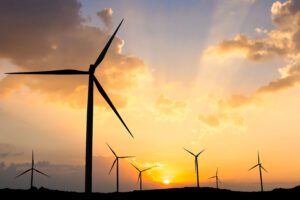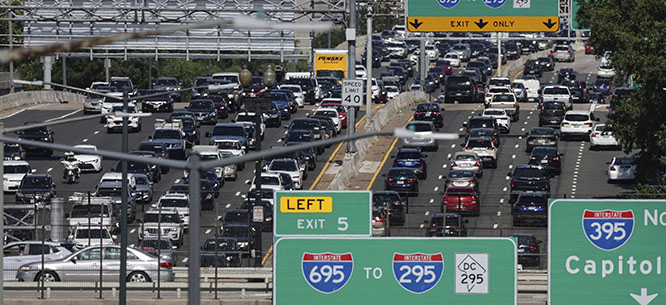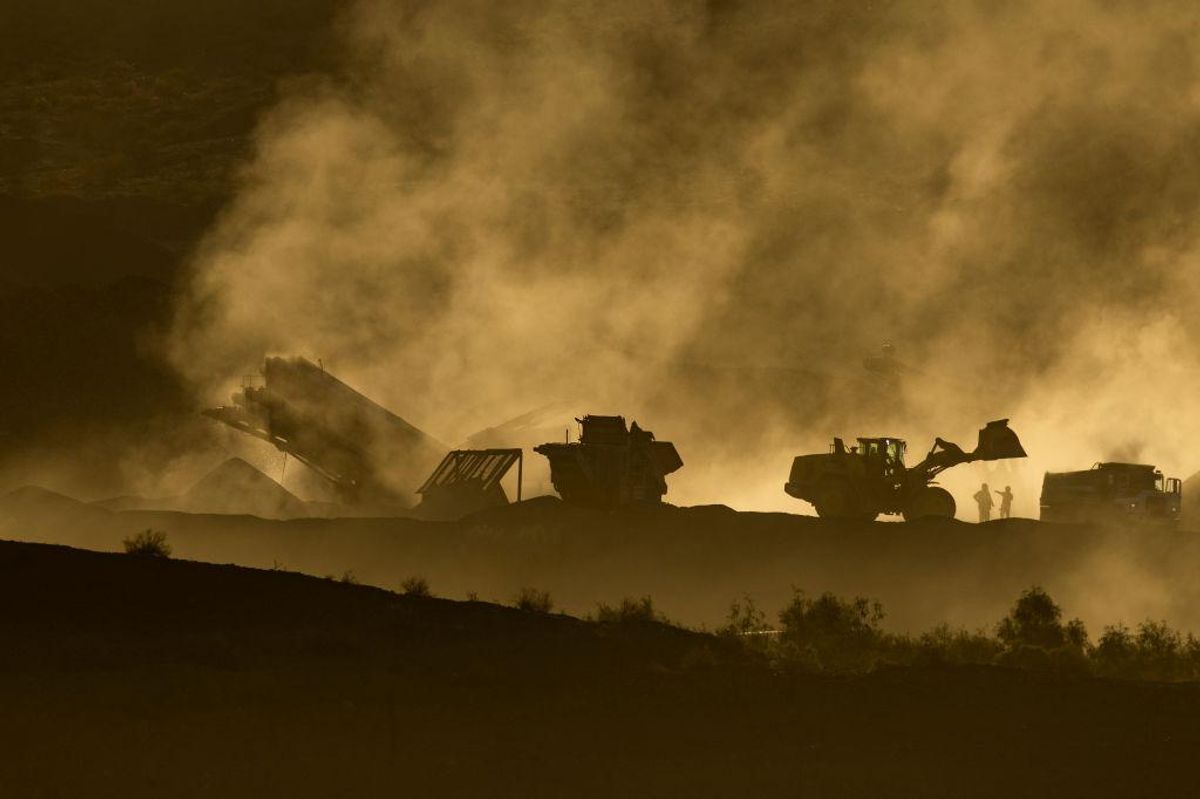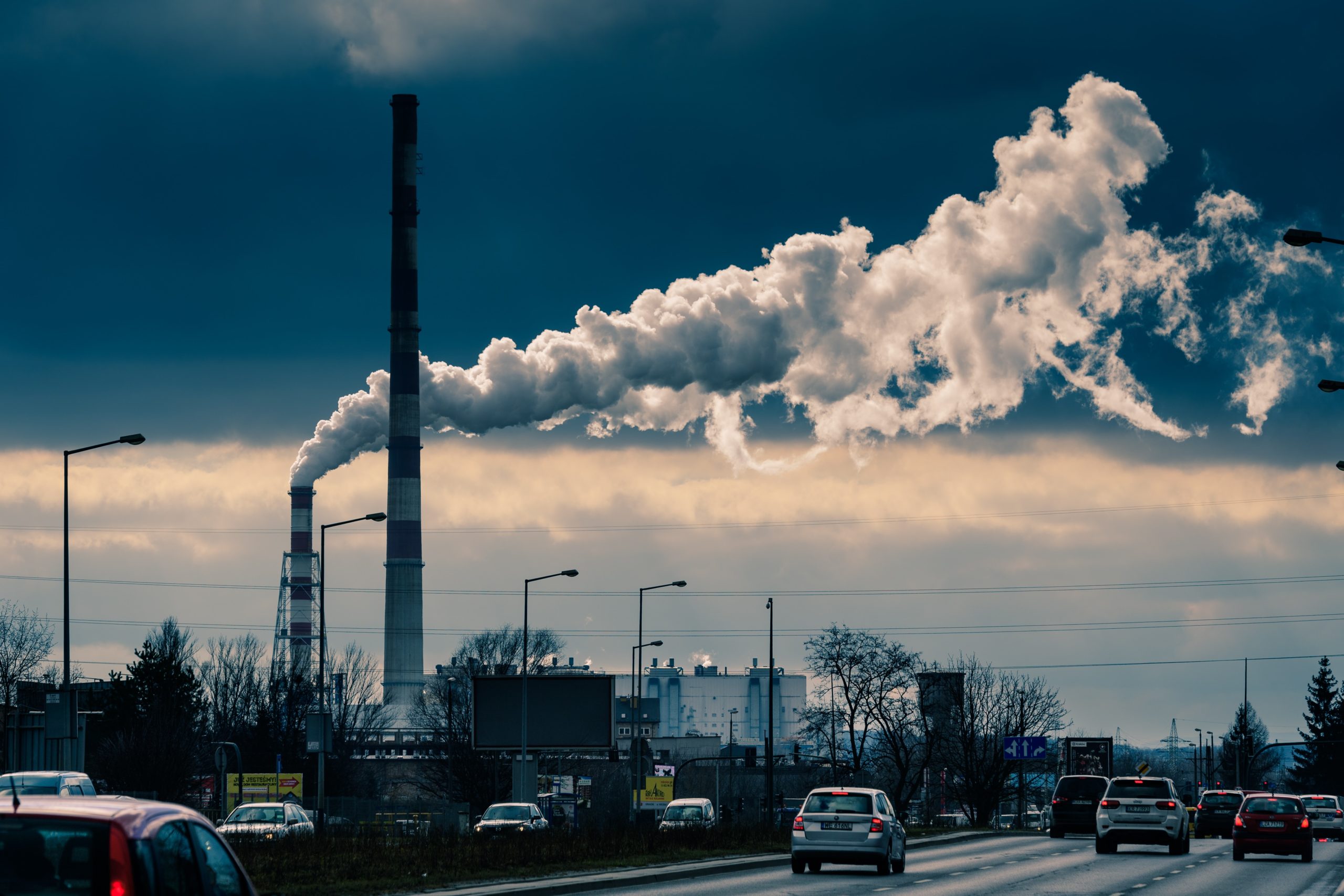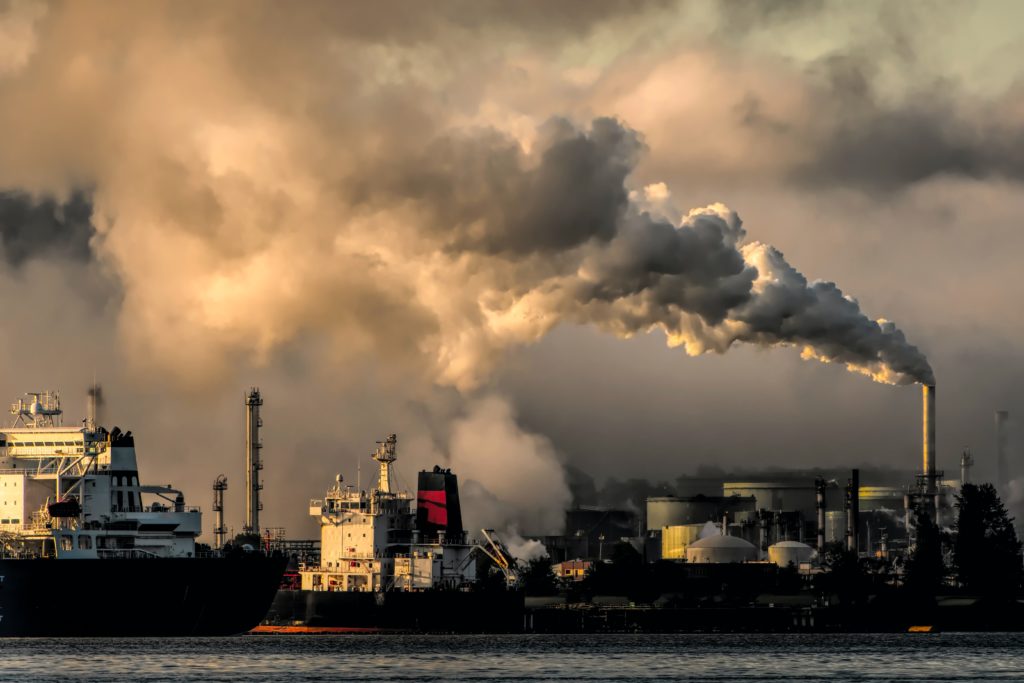
Erica Nophlin woke with a sore throat one morning in early November, just as she has many mornings for the last two years. She checked on her two daughters and young cousin; two had the same symptoms. The girls often had headaches, upset stomachs, and throat pain. “It’s like almost every single night,” said Nophlin, a 37-year-old with shoulder-length black curls.
Until late November, the four lived in an apartment complex in Bristol, Va., a half-mile from a city-owned landfill in an old quarry that has been emitting noxious and toxic fumes, including hydrogen sulfide, volatile organic compounds, and other gases. The fumes followed Nophlin between errands and greeted her outside her church. They kept the girls from enjoying the colorful playground outside her apartment. They seeped into the apartment, stealing sleep and appetites.
Nophlin is not alone. In the past year, the polluted air emitted from the landfill has spread and intensified. Residents have reported intense headaches, nausea, burning eyes and throats, nosebleeds, and other symptoms. A local Facebook group with over 3,000 members is overflowing with stories: One resident reported chest pain and difficulty breathing. A U.S. Army veteran wears a gas mask to sleep. A mother watches her newborn “[wake] up all [through] the night gagging and coughing.” People regularly leave their homes in the middle of the night to escape or end up calling in sick to work.
Nophlin frequently took the girls to urgent care. Most times, she said, the doctors told her it was probably an upper respiratory infection. But no medicine — allergy or antibiotics — helped. “It’s day after day after day,” she said, her hand chopping with each repetition, “your children telling you how bad their head’s hurting and their throat’s hurting…. This is just out of hand.”
There have been nearly 2,500 complaints submitted through an online reporting system the city launched in May, on top of over 6,000 submitted to Smell My City, a pollution tracking app, since January. Residents have launched a grassroots advocacy group, HOPE for Bristol, organized town halls, and met with state officials. One young woman even got in touch with environmental activist Erin Brokovich.
Officials are trying to identify and address the problem. Bristol, Va., city staff and consultants have been repairing and expanding the landfill’s infrastructure for 10 months to better capture emissions. The Virginia Department of Environmental Quality (VDEQ) investigated the landfill and has issued three notices of violation for recordkeeping and gas well problems. The U.S. Environmental Protection Agency conducted two rounds of air sampling in communities around the landfill. And the city of Bristol, Tenn., which sits just over the state line and shares its main street and downtown area with Bristol, Va., is awaiting a report by a toxicologist they hired to assess the situation for potential litigation.
“I think we’re taking the right steps to correct the problem,” Bristol, Va., City Manager and City Attorney Randy Eads told Southerly in early November. “It’s not going as fast as I’d like to go, it’s not going as fast as I know the community wants for it to go, but it is moving in the right direction.”
But recordkeeping failures and an error in a contract have caused critical delays in repairs as a chemical reaction has developed beneath the trash. And residents say city, state, and federal agencies designed to protect them refuse to treat the situation for what it has become: an emergency.
Deep Inside the Trash
The landfill, which accepts household and commercial waste, tires, brush, yard waste, and e-waste, sits just north of the state line in Virginia, beside a juvenile detention center and several low-income neighborhoods. Residents of both Bristols voiced concerns about its potential to pollute their communities — and, in some cases, petitioned against it — before the city opened it in 1998. It’s the only permitted landfill in Virginia built in a former quarry (picture a misshapen, round-shouldered rock bowl) and has generated more than $30 million in debt for a financially struggling municipality.
Multiple Bristolians on both sides of the state line said they began noticing foul-smelling pollution in their neighborhoods up to five years ago, but it started intensifying in 2019 and snowballed throughout 2020.
In January 2021, the city began repairing structural flaws causing gases to leak from the landfill’s surface. A crew installed a new pump to suction water pooling at the bottom of the quarry, packed more dirt onto the landfill’s surface, and fixed broken pipes that collect methane and other gas generated by decomposition. They’re also installing 21 additional gas wells to transport the gas to a flare that burns it off into the atmosphere or an engine that a company uses to generate electricity.
But that gas well system expansion is a year overdue because of recordkeeping failures and poor communication between city staff and consultants working on the landfill, according to records obtained by Southerly and interviews with city officials.
Since January 2020, engineering firm SCS Engineers has been under contract with the city to monitor and report temperatures and other key data from the gas wells. Multiple times that year, starting in July, temperatures in several wells exceeded the maximum allowed limit. But in a violation notice obtained through a public records request, state environmental regulators said the city falsely reported having no excessive temperatures during 2020 — and it did nothing to expand the dump’s gas collection system, a step the site’s permit required for two of the violations.
SCS Engineers did not respond to multiple requests for comment. Eads, the city manager, said the city bears ultimate responsibility for those failures and fired an employee who was supposed to check the reporting before submitting it. The city manager added that the city is “still investigating” the recordkeeping failures.
The gas wells that began overheating last year have since become the location of a chemical reaction that’s continued heating the trash — in one well, to temperatures close to 200 degrees — while belching harmful gases and chemicals. Ernie Hoch, a consultant for Richmond-based firm Draper Aden who is leading the repairs, said that the issue is happening more than 100 feet under the surface, and it’s unclear how large it could be.
Air sampling over the reaction area by the city in April and May showed high levels of hydrogen sulfide — a poisonous gas generated by waste decomposition — carbon monoxide, and volatile organic compounds including benzene, a known carcinogen. EPA testing conducted in June and July in surrounding communities detected those substances at lower levels, which the agency said posed “no immediate risk to human health.” The EPA collected a second round of air samples in October in response to residents’ reports that the “odors had increased in frequency and intensity,” said Myles Bartos, a federal on-scene coordinator for EPA Region 3.
Bartos said that the October data — which he’s still finalizing for a report—showed some higher peaks in chemical levels than the summer air samples, but still no data that shows “an immediate health concern.”
Hoch has repeatedly said that the reaction isn’t a fire — which Virginia law requires landfills to extinguish—and instead calls it a “subsurface reaction.”
“It’s not a fire,” he told Southerly. “It’s not going to burn the neighborhood down, it’s not going to scorch the children in the street. Yes, it’s serious and we’re trying to eliminate it. This has really become the emotional buzzword, but…it’s not an imminent threat to anybody in the community.”
Even if it were a fire, Hoch said, “you can’t put it out. You can’t send a fire department to respond to it. There’s nothing you can do other than what we’re doing.”
Tony Sperling, president and chief engineer at Vancouver consulting firm Sperling Hansen Associates and an expert in landfill fires, was concerned about this when Southerly showed him data from the gas wells. Sperling said it sounded like a “self-sustaining subsurface exothermic reaction,” or pyrolysis — a breakdown of organic materials that occurs with elevated temperatures but little to no oxygen.
“You can smother a fire by turning off the oxygen. You cannot turn off an exothermic reaction,” he said. “There have been probably five or six of these incidents in North America. Once they’re going, we literally do not know how to turn them off.”
A similar subsurface reaction has been burning beneath the surface of a closed Bridgeton, Mo., landfill since 2010. “It struck me that there were a lot of similarities,” said Becky Evenden, a chemical engineer by training who lives in Bristol, Tenn. and co-founded HOPE for Bristol. “They both were in quarries. They both had incredible problems with water. They both became very odorous.”
People living and working near the Bridgeton landfill reported respiratory issues, headaches and burning eyes. In 2013, a former Missouri attorney general sued the landfill’s owner for alleged environmental violations; the company settled for $16 million in 2018.
Sperling — who was retained by the attorney general’s office as an expert in that case — said he was “really concerned” for Bristol residents because of the health impacts he’s seen in communities around landfills with subsurface reactions.
Todd Thalhamer, senior waste management engineer for the California EPA and a consultant who also evaluated the Bridgeton reaction, said he thought the Bristol landfill’s hotspot could be either pyrolysis or a fire, but doesn’t see a difference. The impacts are the same, he said. For every 18 degrees Fahrenheit the temperature increases in solid waste, the production of volatile organic compounds like benzene doubles, he said.
Both Sperling and Thalhamer also said they wouldn’t be surprised if the reaction were generating dioxins and furans, another class of toxic chemicals that can, depending on a person’s amount of exposure, cause health impacts such as skin disorders and immune system impairment. There hasn’t been any testing for those at the site.
Sperling said his own course of action in Bristol would be to “drill like crazy,” since subsurface reactions typically generate “massive pressure” that needs to be relieved. But roughly four months passed between the discovery of the reaction and the start of the gas well drilling.
Eads told Southerly that because SCS Engineers’ contract applied only to the landfill’s 44 existing gas wells, the city had to solicit bids for another contractor to expand the gas well system, he said. Shortly after the city accepted a bid from a Louisiana-based company in August, Eads said, he was told that the bid accidentally left out a key step: connecting the wells to the existing gas collection system.
The city had to jump through another round of bidding and purchasing hoops just for that step. Eads said he was “not happy” about that and said that “in the future, it’s going to be done in one contract.”
Evenden said she wonders: If the city had addressed the subsurface reaction more quickly, would the community be suffering less at this point? Based on her research of other subsurface reactions, she said she’s concerned the pollution in Bristol “could be with us for years. I hope it’s not really bad for many years, but it could be.”
Eads said he’s hopeful that the latest round of repairs will start containing most of the gases escaping from the landfill’s surface within the next two months. But he stressed that that’s a hope, not a certainty.
“What if what we’re doing now doesn’t work? What if it gets worse?” he said. “Those are the things that I truly lose sleep over.”
He asked for patience. “I know it’s hard to say that and hard to be patient when you have to smell that landfill every single night or every morning when you get up,” he said. “I fully get that. But we need to get this project complete. And if this project doesn’t fix it, we go on to Plan B.”
“This Is an Emergency”
Michael Dean, a tall, burly redhead who co-founded HOPE, has become one of the most vocal activists in the community. The Bristol, Tenn., resident regularly drives in search of gases at night, soliciting reports and livestreaming what he finds for the Bristol City-VA/TN Air Pollution Community Page.
Dean and his family moved to the area to enjoy “small-town vibes” and outdoor beauty, he said. But the 41-year-old hardly has energy to finish unpacking in his new home, which fills with the smell of gases almost every night, giving the family headaches, sinus trouble, insomnia, and, for one of his kids, nosebleeds.
In mid-October, the Agency for Toxic Substances and Disease Registry (ASTDR), a federal public health agency within the Department of Health and Human Services, agreed to assess the potential health risks from the pollution; a resident requested it six months ago and HOPE for Bristol was pushing for it.
But by early November, as the air pollution Facebook page flooded with reports of headaches, respiratory issues, and middle-of-night evacuations, HOPE and others decided the community needed more urgent help.
They emailed ATSDR seeking an evacuation location and vouchers for affected residents. The agency’s Region 3 director, Lora Werner, replied that the agency had “not seen monitored levels of chemicals in the air that would trigger evacuation or shelter in place actions.”
They called the Virginia Department of Emergency Management, which told them to contact their local director of emergency management — in their case, Eads. At a packed Nov. 9 city council meeting, they asked Eads, Bristol Va. Mayor Anthony Farnum, and the council to declare an emergency.
“This is an emergency and I am here to plead with this council to see this situation for what it truly is,” the Reverend Samuel Weddington, the lead pastor of First Presbyterian Church in Bristol, Tennessee, said to the council. “Many of the residents of Bristol are living under the nightly threat of this reality of being gassed in their homes. It is a severe burden and they need help to deal with their present suffering and hardship.” (Disclosure: The author attends First Presbyterian Church and knows Weddington.)
Eads said that the city plans to hire a third consultant, one he said will assess how adequately they’ve handled the landfill “crisis.” But he didn’t declare an emergency. The city manager said that he and fire chief Mike Armstrong discussed it with the state emergency management department.
“And the Virginia Department of Emergency Management does not believe that this rises to a level of an emergency, because the EPA has advised the city and the citizens that there is no immediate impact to the health,” he told the public that night.
Tim Estes, chief regional coordinator for VDEM’s Region Four, told Southerly that if the city did declare an emergency, VDEM can only help them try to find supplies — not pay for them. During a July city council meeting, when asked if the city would reimburse people for the air filters and purifiers they’ve been buying to try to make the air in their homes more bearable, Eads said that would be “an admission of liability.”
HOPE for Bristol, a handful of private donors, and an alliance of local pastors recently raised enough money to purchase more than 100 air purifiers for low-income residents. Bristol, Tenn., is also offering purifiers to low- and moderate-income residents through a partnership with the local United Way; in less than two weeks, they received nearly 600 applications.
But air filters only go so far against pollution that covers whole neighborhoods, and with no definite end in sight, many residents are “on edge,” Dean said. “My sleep has been very bad lately. I can’t get, like, more than four or five hours, if that, and it’s [while] breathing in this shit anyway…. Your mental state’s not right.”
Nophlin, the Bristol, Va. resident, said the pollution often worsens her anxiety. “Dealing with COVID has been enough,” she said. “Dealing with the effects from this landfill on my babies, it’s too much…. Nobody’s going to convince me that my children are not being harmed.”
In a 2018 evaluation of the health risks from the Bridgeton landfill gases, ATSDR stated that “longlasting feelings of helplessness and frustration” around the odors and “uncertainty regarding the toxicity of the chemicals” can increase stress and cause stress-related illnesses.
The Facebook group provides residents a space to share their experiences. HOPE included anxiety and depression in a symptom survey they just finished to better quantify what residents are dealing with.
Nophlin recently arrived at her own solution: move. On Nov. 15, a few days after securing a townhouse on the opposite side of town, she and her boyfriend packed up her family’s belongings.
“I did my research on the landfill. It’s like from the beginning till now, anybody that’s been in charge of the city has failed us,” she said. “To me, it’s neglect. There’s no getting around it.”
Nophlin said she couldn’t wait to breathe fresher air again. A neighbor, Larry Widener, came over to say goodbye. The gases are so bad inside his apartment that he and his wife, Barbara, have been shoving towels under the crack of their door. But the windows aren’t insulated.
“You can feel the air coming in [through] them,” he said, “and all that smell’s coming right in.”
This post was originally published on Latest – Truthout.
